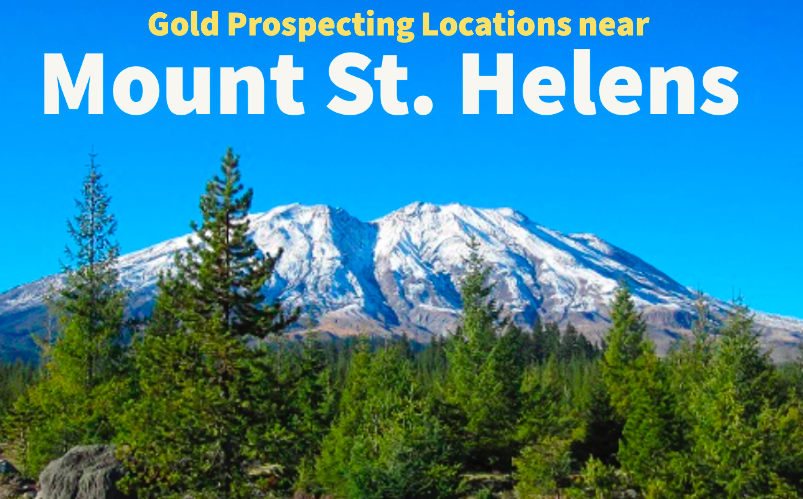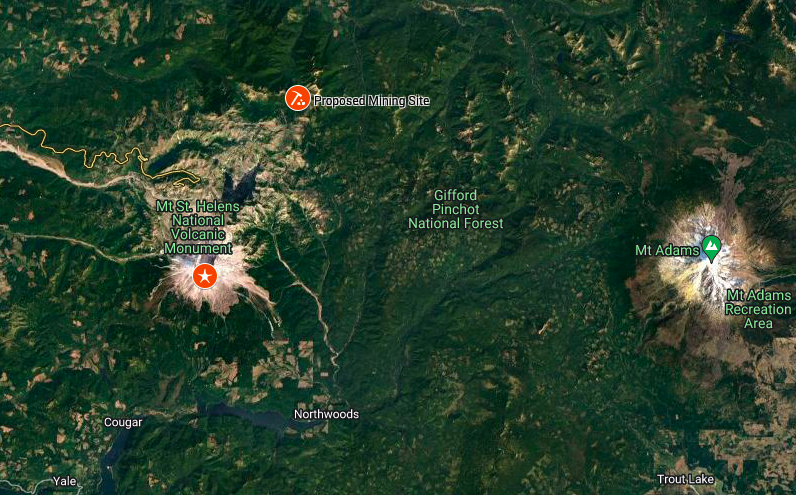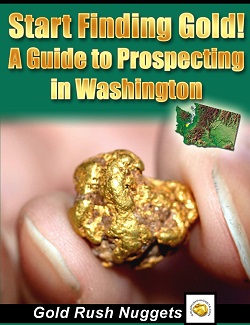
When the Forest Service announced that a company had been approved for exploratory gold and silver mining only a few miles from Mount St. Helen, it alerted people to something that most didn’t realize. There is GOLD in Southwest Washington!
This part of the state is far from a leader when it comes to gold mining. In comparison to most other western state, Washington is not a major gold producer. And west of the Cascades there hasn’t been much mining activity in recent decades.
The truth is, gold miners have been prospecting for gold in the Cascade Mountains at least as early as the 1860s, and likely even before that. What they discovered was that many of the rivers and creeks of Western Washington contain gold, and that includes some areas around Mount St. Helens.
The Early Days of Mining in SW Washington
Let’s take a quick overview of mining efforts that have taken place in Western Washington, and then narrow it down closer to the richest gold-bearing waters close to Mount St. Helens. These will be the areas that you are mostly likely to explore with your gold pan and be able to recover some gold from the gravels.
Almost all of the commercial mining in Washington has taken place in the central and eastern parts of the state. What the early miners discovered was that gold in the Cascade Range was present but scattered… easy to find, but difficult to find in any significant quantities.
Researching the historic claim records and early writings show us that many claims came and went during the late 1800s. For a time, there was considerable placer mining activity along the Columbia River, Cispus River and Lewis River. These rivers, as well as their tributaries, are still excellent spots to gold pan today. We will explore possible prospecting location further in this article.
Lode Mines near Mount St. Helens
The placer deposits that were mined in the rivers never yielded enough interest to constitute what we would call a “gold rush.” Small numbers of men would come and go, claims would be staked and then abandoned, and most any interest by placer mines was over by the 1880s.
Around 1892, some claims were staked just north of Mount St. Helens. These were hard rock prospects that yielded copper, gold, lead, silver and zinc. Some small exploration and development work was done, but these were mostly abandoned by the turn of the century.
Some renewed interest was again given to the area during the Great Depression when there was a general uptick in mining activity across the US. Again, exploration took place with little overall development. This would continue to take place on-and-off through the decades with little actual mining taking place.
As recently as 2019, a Canadian mining company was approved for exploratory drilling in the Green River Valley just north of Mount St. Helens. There are plans to do several dozen drill sites and evaluate the area for a potential mine. In February of 2022, a court canceled the mining permits, determining that agencies failed to provide adequate Environmental Impact Statements. Establishing an operational open-pit mine will likely be an uphill battle considering the amount of recreation that takes place in the area, but only time will tell.

This is an area of interest for a Canadian mining company interested in doing drilling to evaluate ore samples. This might give you a general idea of potential areas to prospect. Of course, stay off of active mining claims and don’t do any prospecting within the National Monument.
Where to Try Gold Panning
While the hard rock deposits near Mount St. Helens may be viable for a large mining company, the average person is more likely to find gold by panning and sluicing in the creeks and rivers in the area. This is where you can recover tiny specks of gold by digging through the gravel and sifting out the lighter materials. Gold is heavy, and by using a careful panning technique you can recover small bits of gold from several areas.
Also Read: The Rich Gold Mines of Republic, Washington
And: How to Locate Gold Veins in Hard Rock
Here are a few general locations known to have gold:
You can find gold around the town of Randle. The Cuspis River and the Cowlitz River both have minor gold deposits. There were some small placer mines where Yellowjacket Creek flows into the Cuspis River. I expect many of the creeks in this area would yield some gold.
On the south side of the mountain is the Lewis River. Both gold and platinum have actually been mined from the gravels of the river. Anywhere downstream of the reservoirs where the river flows freely should have some nice bedrock to explore. Dig out the gravel from the cracks and pan it out.
The entire reach of the Columbia River actually has fine gold. I emphasis fine gold, because by the time it gets down to the lower reaches of the river it is incredibly small and notoriously difficult to recover.
Keeping these general areas in mind, there is gold to be found in many small drainages throughout the area. This includes small, unnamed seasonal tributaries. The Gifford Pinchot National Forest offers countless areas for a prospector to explore.
So get yourself a gold pan, maybe a sluice box, and put on your hiking boots. There’s still plenty of gold out there waiting to be found. I can’t guarantee that you’ll get rich, but you’ll have a great time in one of the most beautiful areas that Washington has to offer!

